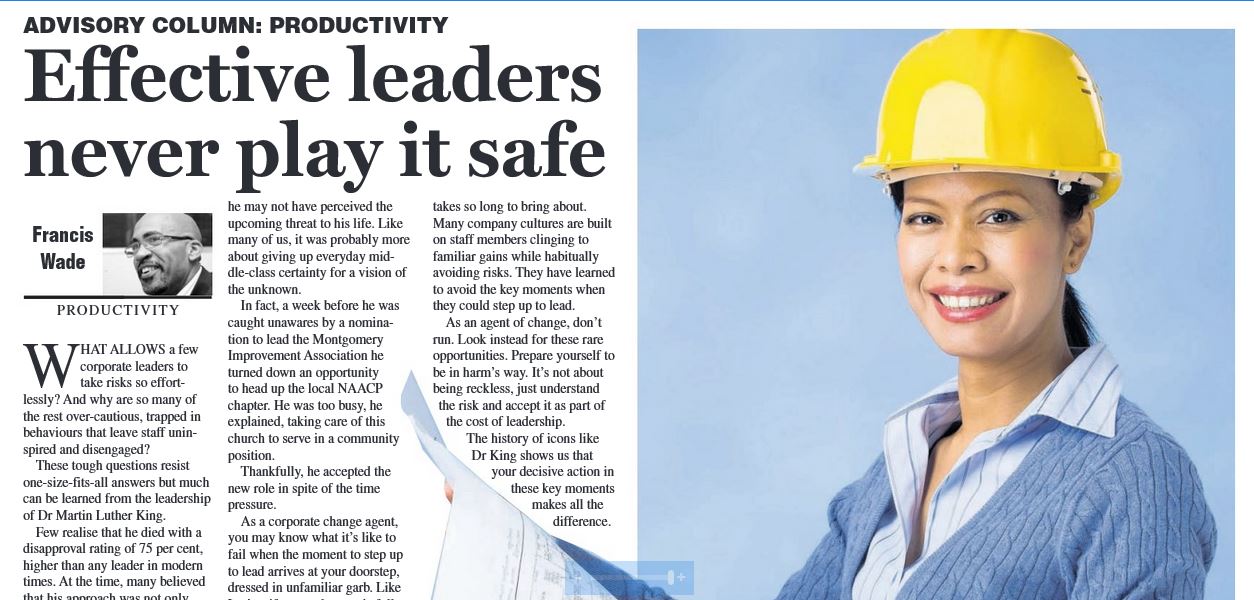Why is it said that a well-conducted strategic planning retreat can be the best executive team-building session ever? What elements should you include so that the time spent helps participants work better than before?
First, you must start by setting aside any recent, fluffy definition of “team-building”: it’s become synonymous with “entertaining.” For many it means “changing out of work clothes to engage in an activity completely unrelated to the job”. Here in the Caribbean activities such as paintball, casino nights, church services and Soca parties have all earned the label, even as they deliver a “feel-good” experience.
However, many executives are not amused. They see it as unproductive, a way to bribe employees by giving them some fun (they supposedly want) in exchange for doing work (which they don’t really want.) This perverse logic represents old thinking. It comes from a time when productivity had to be coerced.
By contrast, the highest performers who typically make it to the executive ranks are already motivated. For them, team building shouldn’t be a break from work. Instea, it should enhance it by giving them a focused, intense opportunity to fix communication problems, deal with unresolved issues and learn new soft skills.
However, if you are designing such an outcome, don’t expect it to be easy. The best way to start is by focusing on observable behaviors which are missing. Once they are identified, provide your trainees the chance to practice them in a safe environment. Think of it as the equivalent of sparring with a partner in boxing, practicing in the nets in cricket or doing 100 free throws in basketball practice. Repetition, especially under the watchful eye of a demanding coach, works.
A strategic planning retreat, due to its intense nature, can be engineered to produce such outcomes. Here’s how you do it.
1. Recast the Retreat as a Balance
The worst mental model to have of a strategic planning retreat is to think of it as a round-about way to develop a key document. In fact, it’s easier to get the CEO or consultant to just sit down over a weekend and type away until the task is done.
When convinced by others, some leaders condescend to conducting a full team retreat just to get other people to agree to their ideas. In these settings, the event is simply a rubber stamp. The goal of including colleagues is to sell them on the CEO’s or consultant’s brilliance.
By contrast, an authentic retreat which infuses team-building at every step views the process of developing the details as co-equal with the final product. When they are both respected, you can achieve a fine balance between engaging participants and upholding the quality of the end result.
2. Use the Retreat to Engage and Train
The best process to create a group strategy involves two kinds of thinking activities. The first, “divergence”, means generating new ideas. The second, “convergence”, is the activity of bringing about agreement between different parties.
In a strategic planning retreat, it’s possible for you to emphasize these two opposite phases, teaching participants how to recognize each one. Now, they can learn the relevant skills within each activity and how to switch between them.
In particular, convergence is fraught with danger. In these phases, a good retreat should have moments when the fight for contending ideas becomes fierce. After all, the stakes are high and people from separate disciplines see the same facts with the special lenses they have been trained to use.
Don‘t be like members of weak teams which try to avoid such tussles by putting decisions to a vote. Effective groups work out their differences in an open discussion. Before doing so, take your participants through a self-evaluation of the specific skills needed when diverging or converging. As they make progress towards the end result, get them to reflect on how to improve them in real time.
The truth is that a strategic planning retreat is actually made up of everyday conversations. It’s just that you can seize the opportunity for participants to reflect on the quality of these discussions as well as the final output.
If you also provide an experienced coach to give feedback in the moment, that’s a huge bonus. She should encourage each person to take risks, to try out fresh skills. Expect some new behavior changes to occur in real-time that stick around for years to come.
The bottom line is that a strategic planning retreat is an ideal chance to practice and up-level everyday executive skills. By the end, the benefits the company gains far exceed that of the best party or outside exercise. That’s real team-building.


